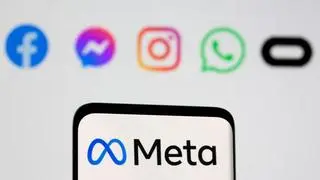Twitter shares plunged as the social network reported sluggish revenue and user growth — its finances sputtering despite increased prominence from President Donald Trump’s extensive use of the platform.
Shares sank more than 12 percent to close at USD 16.41 as investor hopes faded for a revival of growth at the messaging platform, which has lagged behind its rivals in the fast—moving social media sector.
Twitter reported a net loss in the fourth quarter of USD 167 million, after a USD 90 million deficit in the corresponding period a year ago.
Revenue in the quarter rose a modest one percent to USD 717 million.
In the critical area of user growth, Twitter said it ended 2016 with 319 million monthly active users, a gain of four percent from a year ago in the closely watched metric and only two million more than the prior quarter.
Advertising revenue, which makes up the lion’s share of Twitter’s receipts, was down slightly from a year ago at $638 million. Its revenue from the United States was down five percent at $440 million.
For all of 2016, Twitter lost $456 million on revenues of $2.5 billion. That represented a narrowing of the deficit from 2015 and a 14 percent increase in revenue.
Chief executive Jack Dorsey remained upbeat about Twitter’s long-term prospects following its efforts to revamp the platform with more video and other changes.
“The whole world is watching Twitter,” Dorsey told a conference call.
“While we may not be meeting everyone’s growth expectations, there’s one thing that continues to grow and outpace our peers: Twitter’s influence and impact.”
He added that Twitter “carries some of the most important commentary and conversations,” and is used to mobilize people into action.
But some analysts say Twitter is moving far too slow in the rapidly evolving social media space.
Jan Dawson at Jackdaw Research said Twitter has been trying to get more users and improved engagement but that “some of this stuff has been in the works for over two years, and Twitter still doesn’t seem to be making meaningful progress.”
In a blog post, Dawson called Twitter’s revenue picture “pretty awful” and said it may have a hard time keeping advertisers interested.
“Twitter’s big competitors for direct response advertising — notably Facebook and Google — are just way better at this stuff than they are, and Twitter simply hasn’t made anywhere near enough progress here over the last few years. As a result, Twitter is enormously susceptible to competitive threats.”







Comments
Comments have to be in English, and in full sentences. They cannot be abusive or personal. Please abide by our community guidelines for posting your comments.
We have migrated to a new commenting platform. If you are already a registered user of TheHindu Businessline and logged in, you may continue to engage with our articles. If you do not have an account please register and login to post comments. Users can access their older comments by logging into their accounts on Vuukle.